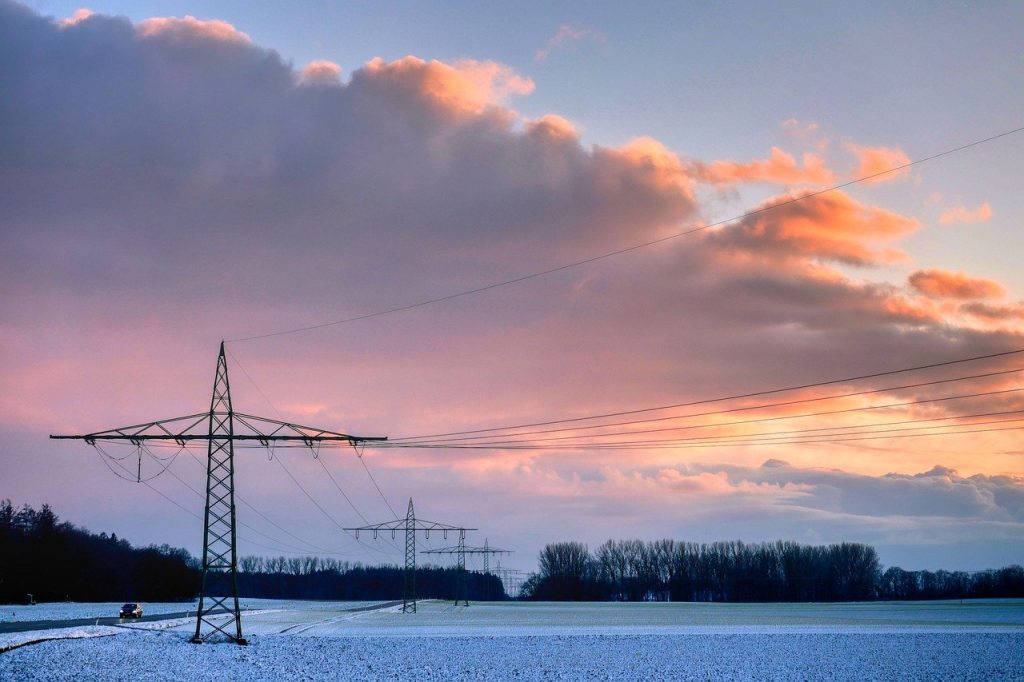Imagine a world where the constant flickering of lights, the sudden shutdown of appliances, and the fear of damaging your electronics due to voltage fluctuations were a thing of the past. It seems like a dream, right? Well, brace yourself, because engineers have been hard at work to make this dream a reality. Gone are the days of holding your breath every time you plug in a device – the quest for fewer voltage fluctuations is finally within our grasp. In this article, we will explore the innovative advancements that have paved the way for a more stable and reliable power supply, taking us one step closer to a future where voltage fluctuations are nothing more than a distant memory.

Causes of Voltage Fluctuations
Frequency Variation
Frequency variation refers to a change in the frequency of the electrical power supply. Standard utility power in most countries operates at a frequency of 50 or 60 Hz. However, variations in the frequency can occur due to imbalances in the supply-demand ratio, inadequate power generation, or equipment malfunctions. These frequency variations can lead to voltage fluctuations, affecting the stability of the power supply.
Load Variation
Load variation is another common cause of voltage fluctuations. Fluctuations in the power demand from electrical appliances or industrial machinery can result in voltage instability. For example, when a large industrial machine starts or stops, it can cause a sudden increase or decrease in the load on the electrical system, leading to voltage fluctuations. Load variations can also occur in residential areas during peak usage times when multiple appliances are being used simultaneously.
Voltage Sag
Voltage sag, also known as a voltage dip or under-voltage, occurs when the voltage level drops below the normal operating range for a short period. This can happen due to sudden changes in load demands, faults in the power grid, or when large electrical equipment is turned on. Voltage sags can be particularly problematic for sensitive electronic equipment, as they can cause malfunctions or even damage.
Voltage Swell
On the other end of the spectrum, voltage swell refers to a temporary increase in voltage levels. This can occur due to sudden load reductions, faults in the power grid, or when electrical equipment is switched off. While voltage swells may not be as harmful to electronic devices as voltage sags, they can still cause issues with equipment performance and lifespan.
Voltage Flicker
Voltage flicker is a rapid and repetitive variation in the voltage level, often visible as a fluctuation in lighting intensity. It can be caused by changes in the electrical load, fluctuating power generation, or faulty electrical components. Voltage flicker can be a nuisance, affecting visual comfort and causing distractions. It can also have negative effects on sensitive equipment, such as computer systems or precision instruments.
Negative Effects of Voltage Fluctuations
Damage to Electrical Equipment
One of the most significant negative effects of voltage fluctuations is the potential for damage to electrical equipment. Sudden changes in voltage levels can cause stress on electronic components, leading to malfunctions or permanent damage. For example, voltage sags can cause computers to reboot or data loss, while voltage swells can overload power supplies and damage internal circuits. These fluctuations can shorten the lifespan of expensive equipment, resulting in increased maintenance and replacement costs.
Increased Energy Consumption
Voltage fluctuations can also lead to increased energy consumption. When voltage levels are not stable, some appliances or machinery may operate less efficiently. For instance, motors running on voltages higher than their rated values may consume more energy to maintain the desired speed or output. Similarly, in the case of voltage sags, appliances may draw more current to compensate for the reduced voltage, resulting in higher energy consumption. The overall impact on energy costs can be significant, especially for large industrial or commercial facilities.
Safety Risks
Voltage fluctuations can pose safety risks to both individuals and property. Rapid changes in voltage levels can cause flickering lights or dimmed lighting, which can create hazardous conditions, especially in areas where good visibility is crucial. Additionally, voltage sags can affect the operation of critical safety systems such as fire alarms, emergency lighting, or security systems. Unreliable or inconsistent power can compromise the effectiveness of these safety measures, putting people and property at risk.
Methods to Reduce Voltage Fluctuations
Voltage Stabilization Devices
Voltage stabilization devices, such as voltage stabilizers or voltage regulators, are designed to maintain a stable output voltage regardless of fluctuations in the input voltage. These devices continuously monitor the incoming voltage and automatically adjust it to ensure a constant output within a predetermined range. Voltage stabilization devices are commonly used in industrial applications to protect sensitive equipment and minimize the impact of voltage fluctuations.
Automatic Voltage Regulators
Automatic voltage regulators (AVRs) are electronic devices that monitor the input voltage and, if necessary, adjust it to maintain a stable output voltage. AVRs are particularly useful in areas where voltage fluctuations are frequent or severe. They provide a reliable power supply to sensitive electronic equipment, preventing damage caused by voltage surges or dips. AVRs are commonly used in data centers, hospitals, laboratories, and other environments where stable voltage is critical.
Isolation Transformers
Isolation transformers are another effective method to reduce voltage fluctuations. These transformers can isolate electrical equipment from the main power supply, providing a stable and clean power source. They not only protect the equipment from voltage fluctuations but also eliminate electrical noise and transient surges. Isolation transformers are commonly used in sensitive applications such as medical equipment, telecommunications, and audio systems.
Power Quality Filters
Power quality filters, also known as active power filters, are designed to filter out voltage fluctuations and harmonic distortions from the electrical system. These filters use advanced control techniques to detect and compensate for voltage and current imbalances, ensuring a stable power supply. Power quality filters are commonly used in industrial settings where power quality is critical for the reliable operation of machinery and equipment.
Demand Response
Demand response programs involve adjusting electrical load patterns in response to fluctuations in the power grid. By participating in demand response programs, consumers agree to temporarily reduce or shift their electricity consumption during peak demand periods, typically through load shedding or load shifting strategies. This enables the power grid to maintain voltage stability during periods of high demand, reducing the likelihood of voltage fluctuations and grid instability.
Voltage Sag Mitigation Techniques
Voltage sag mitigation techniques aim to minimize the impact of voltage sags on sensitive equipment. These techniques include the use of uninterruptible power supplies (UPS) or voltage sag riders to provide a temporary power source during voltage sag events. In industrial applications, equipment may be designed with built-in ride-through capability or installed with compensating devices to boost voltage levels during sag occurrences. These techniques provide a buffer against voltage sags, ensuring continuous and reliable operation of critical equipment.
Importance of Power Factor Correction
Understanding Power Factor
Power factor is a measure of how effectively electrical power is being used. It is the ratio of real power (measured in watts) to apparent power (measured in volt-amperes). A power factor of 1 (or unity power factor) indicates that all the electrical power being consumed is being used efficiently. However, in many electrical systems, especially those with inductive loads like motors or transformers, the power factor is often less than 1, resulting in wasted energy and reduced system efficiency.
Power Factor Correction Techniques
Power factor correction techniques involve improving the power factor of an electrical system by reducing reactive power and increasing the overall system efficiency. This can be achieved through various methods, such as installing power factor correction capacitors, optimizing load distribution, or implementing power factor correction controllers. These techniques help minimize the reactive power drawn from the power grid, reduce energy losses, and improve the power system’s overall efficiency.
Benefits of Power Factor Correction
Power factor correction offers several benefits for both consumers and power utilities. Improved power factor results in reduced power losses, leading to lower energy consumption and cost savings. It also helps alleviate voltage fluctuations and improves the stability of the power grid. Additionally, power factor correction can increase the capacity of electrical systems, allowing for the connection of more load without exceeding the limits of the infrastructure. Overall, power factor correction plays a crucial role in ensuring efficient and reliable energy utilization.

Monitoring and Maintenance Measures
Voltage Monitoring Systems
Voltage monitoring systems are used to continuously measure and monitor the voltage levels within an electrical system. These systems can provide real-time data on voltage fluctuations and abnormalities, allowing for quick detection and response to any potential issues. Voltage monitoring systems are typically equipped with alarms or automatic shutdown features, helping to prevent equipment damage or safety risks. Regular monitoring of voltage levels can also provide valuable insight into the power quality and stability of the electrical system.
Regular Inspection and Maintenance
Regular inspection and maintenance of electrical equipment and systems are essential in preventing voltage fluctuations and ensuring optimal performance. Routine inspections should include checking for loose connections, worn-out components, or signs of damage. Regular maintenance activities, such as cleaning, lubrication, and calibration, can help identify and address any potential issues before they escalate into larger problems. By implementing a proactive maintenance program, the risk of voltage fluctuations can be significantly reduced.
Load Management
Effective load management is another crucial aspect of reducing voltage fluctuations. By monitoring and analyzing the power demand patterns, it is possible to identify peak load periods and implement load shedding or load shifting strategies. Load management techniques can help balance the power demand and supply, preventing excessive strain on the electrical system and minimizing voltage fluctuations. This approach is particularly important for industrial facilities or areas with high energy consumption.
Preventive Measures
Preventive measures involve implementing safeguards to minimize the occurrence and impact of voltage fluctuations. This includes using surge protection devices to prevent voltage spikes or investing in voltage regulation equipment to stabilize the power supply. Additionally, proper grounding and earthing techniques can help maintain a consistent reference potential, reducing the likelihood of voltage fluctuations. By taking proactive measures, potential disruptions caused by voltage fluctuations can be mitigated, ensuring the reliable operation of electrical systems.
Role of Renewable Energy Sources
Smooth Integration of Renewable Sources
Renewable energy sources, such as solar and wind, play a significant role in reducing reliance on fossil fuels and mitigating climate change. However, the intermittent nature of renewable sources can introduce challenges related to voltage fluctuations and grid stability. To ensure the smooth integration of renewable energy sources into the electrical grid, advanced power management and control systems are necessary. These systems help regulate and stabilize the power flow, optimizing the utilization of renewable resources while maintaining voltage stability.
Grid Stability and Voltage Control
Renewable energy sources can also contribute to grid stability and voltage control. As more renewable energy is integrated into the grid, the distributed nature of generation can help alleviate voltage fluctuations and reduce the stress on centralized power plants. With proper grid management strategies and advanced control technologies, renewable energy sources can actively participate in voltage control, providing support during voltage dips or surges and enhancing the overall stability of the electrical grid.

Regulations and Standards
IEEE Standards
The Institute of Electrical and Electronics Engineers (IEEE) has developed a range of standards related to voltage fluctuations and power quality. These standards provide guidelines and specifications for equipment manufacturers, system operators, and utilities to ensure the reliable operation of electrical systems and the compatibility of equipment. Standards such as IEEE 1159 and IEEE 519 address power quality issues, including voltage fluctuations, and provide recommendations for mitigation techniques and acceptable limits.
IEC Standards
The International Electrotechnical Commission (IEC) also plays a significant role in setting global standards for electrical systems and equipment. IEC standards, such as IEC 61000-4-15 and IEC 61000-4-30, define the measurement methods and levels for voltage fluctuations and power quality parameters. These standards help ensure consistency and compatibility across different electrical systems and facilitate international cooperation in addressing voltage fluctuations.
National Regulations
Many countries have specific regulations and codes that address voltage fluctuations and power quality requirements. These regulations often establish legal limits for voltage variations and prescribe measures for utilities and equipment manufacturers to comply with these standards. By enforcing national regulations, governments can protect consumers, minimize the impact of voltage fluctuations, and ensure the reliable delivery of electricity.
Case Studies and Success Stories
Industrial Applications
In an industrial setting, voltage fluctuations can have severe consequences, leading to equipment failures, production losses, and safety risks. Many industrial facilities have successfully implemented voltage stabilization devices, such as automatic voltage regulators and power quality filters, to mitigate these fluctuations. By ensuring a stable and reliable power supply, these techniques have helped industrial companies improve efficiency, reduce downtime, and protect valuable equipment investments.
Residential Solutions
Voltage fluctuations can also impact residential areas, affecting the performance of household appliances, electronics, and lighting systems. Many individuals have turned to voltage stabilizers and surge protectors to safeguard their electrical equipment. These devices provide protection against voltage fluctuations, ensuring the longevity and optimal performance of household appliances. Additionally, power factor correction techniques, such as the use of power factor correction capacitors, have been adopted to address power quality issues and reduce energy consumption in residential applications.
Technological Advances and Future Outlook
Smart Grid Solutions
The advancement of smart grid technologies offers significant potential in managing voltage fluctuations and improving power quality. Smart grid solutions integrate advanced sensing, control, and communication technologies to enable real-time monitoring and control of the electrical system. Through intelligent load management, automated voltage regulation, and demand response capabilities, smart grids can effectively detect and respond to voltage fluctuations. These technologies provide enhanced grid stability, energy efficiency, and flexibility in integrating renewable energy sources.
Microgrid Implementation
Microgrids, independent electricity distribution systems that can operate autonomously or in conjunction with the main power grid, offer another promising solution for voltage fluctuation management. By creating smaller localized grids, microgrids can effectively mitigate the impact of voltage fluctuations on a specific area or facility. Microgrids can utilize local renewable energy sources, implement advanced control strategies, and prioritize voltage stability. This decentralized approach to energy distribution enhances reliability, power quality, and resiliency while reducing the potential spread of voltage fluctuations.
Advancements in Energy Storage
Energy storage technologies, such as batteries or flywheel systems, hold substantial potential in mitigating voltage fluctuations. By storing excess energy during periods of low demand and releasing it during high demand or grid instability, energy storage systems can help regulate voltage levels and stabilize the electrical grid. Furthermore, coupling energy storage with renewable energy sources enables the continuous supply of electricity even during intermittent generation periods. Advances in energy storage technologies are expected to have a significant impact on voltage fluctuation management and the integration of renewable energy in the future.
Conclusion
Voltage fluctuations can have detrimental effects on electrical equipment, energy consumption, and safety. Understanding the causes and negative impacts of voltage fluctuations is crucial for implementing effective mitigation strategies. By utilizing voltage stabilization devices, implementing power factor correction techniques, and adopting advanced monitoring and maintenance measures, the risks associated with voltage fluctuations can be minimized. Additionally, the integration of renewable energy sources, adherence to regulations and standards, and the implementation of smart grid solutions will play essential roles in ensuring a stable and reliable power supply. As technology continues to advance, the future looks promising for voltage fluctuation management, with microgrids, energy storage systems, and smart grid solutions paving the way towards a more resilient and efficient electrical system.










